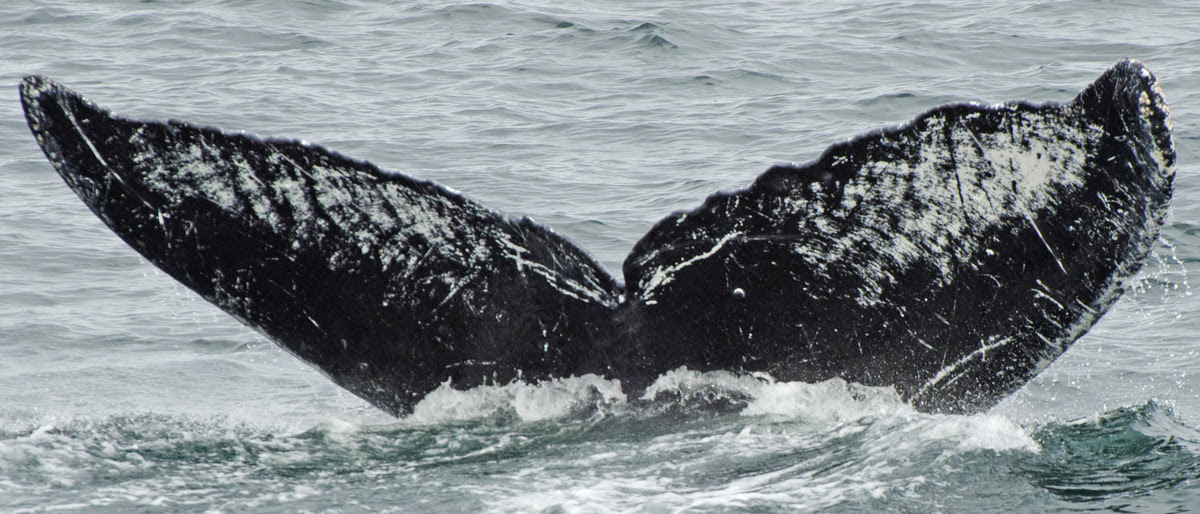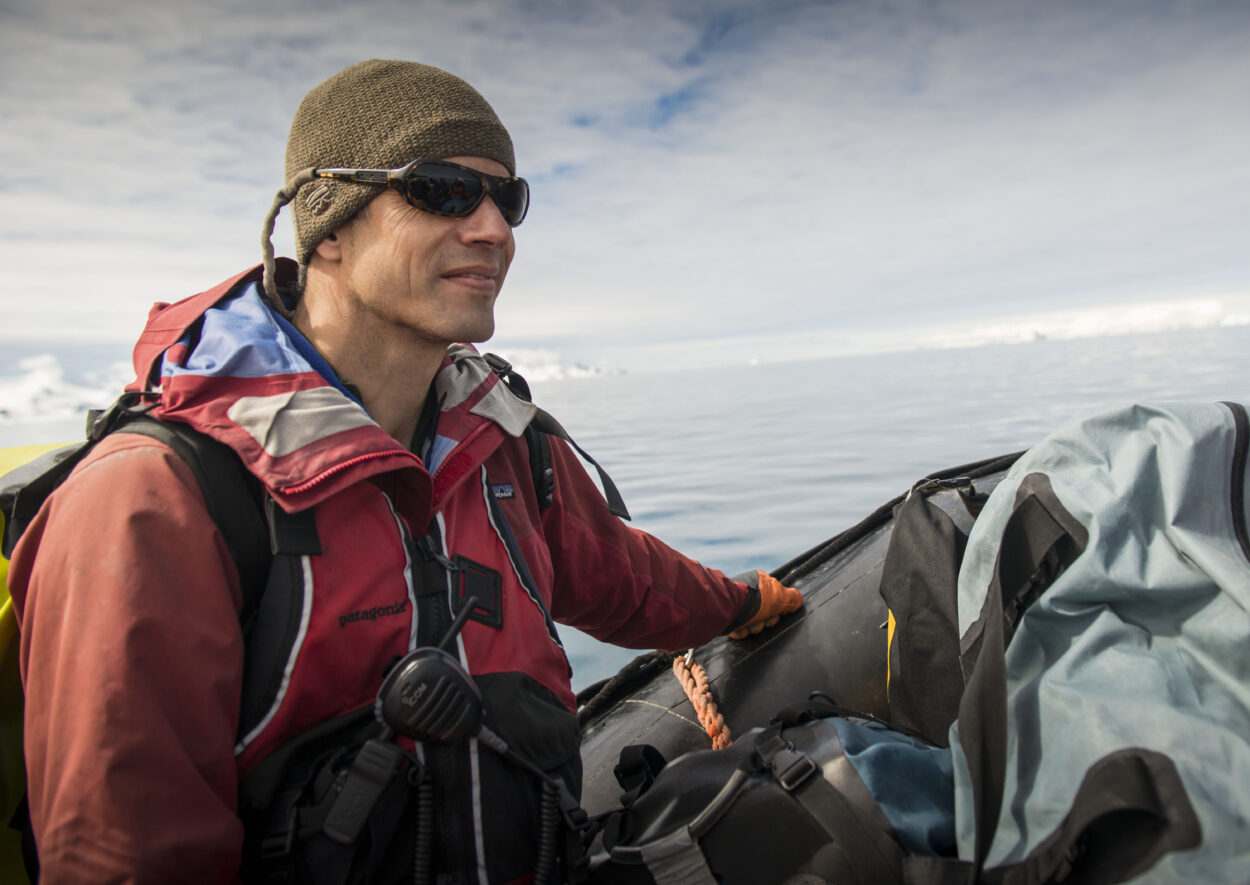
A new whale identification program uses artificial intelligence to identify humpbacks by their flukes. Through photographs shared by whale watchers, the citizen’s science program Happy Whale has recorded thousands of whales that travel to and from Alaska.
It’s a special moment, watching a gigantic humpback going for a deep dive. The whale’s back arches, the tail swings up, disappearing below the surface, like the pointed toes of an Olympic diver.
The tail fins or flukes are unique to each whale. The black and white pattern on the underside are precise identifiers.
“Like facial recognition, we can tell who it is,” said Ted Cheeseman, an expedition scientist who has studied whales all over the world, including in Antarctica. He co-founded the program, Happy Whale, as a way to track humpbacks, a species that’s known to travel thousands of miles. It’s helping to answer a lot of questions about their individual behavior.
“Who does the whale hang out with? Does the whale have a calf?” Cheeseman said. “What is the larger story here such that we can build family relationships and so on, tell more of the story of the individual. To me, that’s a huge part of this.”
The difference between this photo ID program and others in the past is the man power needed. Happy Whale uses an automated computer program to ID the photos instead of people doing it by hand. Just one full-time and two part-time employees run the database and confirm the results.
The program started in 2015 but took years to test and fine tune. Now, whale watchers can share their fluke photos and locations to the online database, which has identified 68,000 humpbacks worldwide.
The program started with 18,000 whale photos that had been previously identified by hand. Cheeseman says Happy Whale is more efficient.
“Somebody gives me a data set of a thousand photos, it used to be that that would be an hour per photo,” Cheeseman said. “The actual matching time is now insignificant. If someone gives me a thousand photos I can tell them the next day that, ‘Oh, 700 of them are these known whales and these 300, those are probably new,’ you know, it’s pretty cool.”
The program has documented about 30,000 humpbacks in the North Pacific, which Cheeseman expects is about 70 percent of the population.

Participants are rewarded for their work. They usually get an initial response within a few days to a week and get notices when their whale is spotted again.
Dennis Rogers, a long-time whale watching guide in Petersburg, has uploaded over 5,500 photos to the program.
“It’s very interesting just to see the migrations,” Rogers said. “Some of these whales go to Hawaii for the winter and they’re resighted there, which we get a notification when that resighting happens. Some of our whales go to Mexico. It’s real interesting, some of our whales go to Mexico one year and to Hawaii the next year.”
Rogers encourages his clients to send in their photos as well. He says other tracking systems, including satellite tags, can fall off whales within days.
“This is purely un-invasive and gives a great amount of information over time. Some of our whales we’ve been tracking close to 40 years,” Rogers said.
The program has found some unusual migrations in Alaska’s individual whales, said Scott Roberge, a board member for Petersburg’s Marine Mammal Center.
“They’ve followed one from Alaska to Hawaii to Japan back to Alaska,” Roberge said. “Made the loop of the North Pacific.”
Roberge also contributes photographs and enjoys getting the feedback.
“It’s incredible to get that information and to get the email that says, ‘Oh, the whale that you took a picture of last summer was just found in Hawaii and it just had a baby,” he said.
Cheeseman believes that over 95 percent of humpbacks in Southeast Alaska are in the database already. But that’s just the start of Happy Whale as the program is expanding. Cheeseman hopes to automate dorsal fin recognition within the year, which would allow them to identify and track orcas and other species a lot faster.
Cheeseman gave a presentation in Petersburg, May 18 at the Wright Auditorium.











